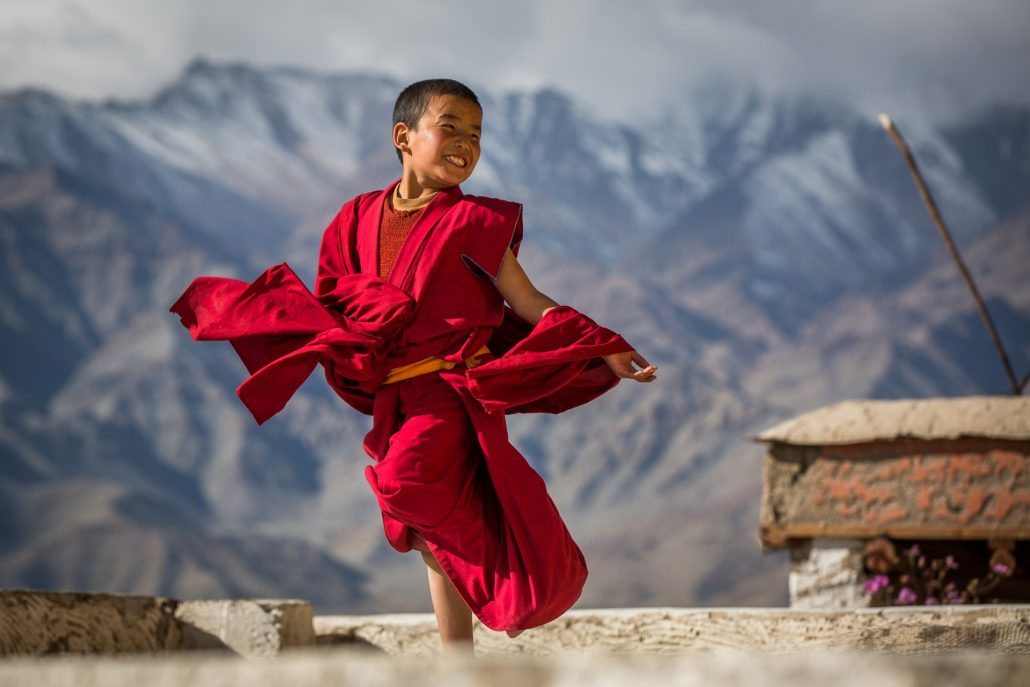“Since this continent is adorned by [a jambu/Jambubriksha] tree, it is known as the 'Continent of Jambu', or Jambudvipa. The jambu tree is presumed by some to be the rose-apple tree (Eugenia jambolana). More recent scholarship suggests that it may be a variety of plum. However, legend says that only one jambu tree exists, which is not visible to ordinary people but only to enlightened beings.
The Buddhist cosmology divides the bhūmaṇḍala (circle of the earth) into three separate levels: Kāmadhātu (Desire realm), Rūpadhātu (Form realm), and Ārūpyadhātu (Formless realm). In the Kāmadhātu is located Mount Meru (Sumeru), which is said to be surrounded by four island-continents. The southernmost island is called Jambudvipa. The other three continents of Buddhist accounts around Sumeru are not accessible to humans from Jambudvīpa. Jambudvīpa is shaped like a triangle with a blunted point facing south, somewhat like the Indian subcontinent. In its centre is a gigantic Jambu tree, from which the continent takes its name, meaning "Jambu Island."Jambudipa is one of the four Mahādīpas, or great continents, which are included in the Cakravāla "cosmos" and are ruled by a cakravartin. They are grouped around Mount Sumeru. In Jambudvīpa is Himavā with its eighty-four thousand peaks, its lakes, mountain ranges, etc.
This continent derives its name from the Jambu tree (also called Naga), which grows there; its trunk is fifteen yojanas in girth; its outspreading branches are fifty yojanas in length; its shade is one hundred yojanas in extent; and its height is one hundred yojanas (Vin.i.30; SNA.ii.443; Vsm.i.205f; Sp.i.119, etc.) On account of this tree, Jambudīpa is also known as Jambusanda (SN.vs.552; SNA.i.121). The continent is ten thousand yojanas in extent; of these ten thousand, four thousand are covered by the ocean, three thousand by the Himalayan mountains, and three thousand are inhabited by men (SNA.ii.437; UdA.300).
Jambudvīpa is the region where humans live and is the only place where a being may become enlightened by being born as a human being. It is in Jambudvīpa that one may receive the gift of Dharma, come to understand the Four Noble Truths, the Noble Eightfold Path, and ultimately realise liberation from the cycle of life and death. Another reference is from the Buddhist text, the Mahāvaṃsa, where the emperor Ashoka's son Mahinda introduces himself to King Devanampiya Tissa of Anuradhapura as from Jambudvipa, referring to what is now the Indian subcontinent. This is described in the Kṣitigarbha Bodhisattva Pūrvapraṇidhāna Sūtra in Mahayana Buddhism.- Donations for our Buddhist research and developmentDo you earnestly cherish our devoted work? Assuming this is the case, we are delighted that you are finding our blog useful and valuable. Would you consider making a donation for our Buddhist research and development?We need your help to secure the future of scholarly interaction with Buddhism. Since our very first publication of Dharma works and activities in 2008, we have been effortlessly providing free distribution of Dharma posts and articles throughout the previous 14 years. We have exceptionally constrained support and do not receive subsidies or funding from people in general.Please help us develop our Dharma activities that will not only benefit you but all Dharma readers on the planet. Please consider showing your support. Your generosity will certainly help us enhance our work and accomplish more for a better and brighter future.Thank you for reading. May you find peace and great bliss. With your support, it helps to spread the Buddha’s precious teachings and turn the Dharma wheels in the world.Aspiration For BodhichittaFor those in whom the precious Bodhichitta has not arisenMay it arise and not decrease.But increase further and further.Dedication of MeritBy this merit, may we then obtain omniscience then.Having defeated the enemies wrongdoingsMay we liberate migratory from the ocean of existence.With its stormy waves of birth, old age, sickness, and death.*NoteI do not own or infringe any copyright on the picture(s).Picture(s) courtesy and credit to the rightful distributors and/or studiosThe picture(s) are intended for editorial use only.



































